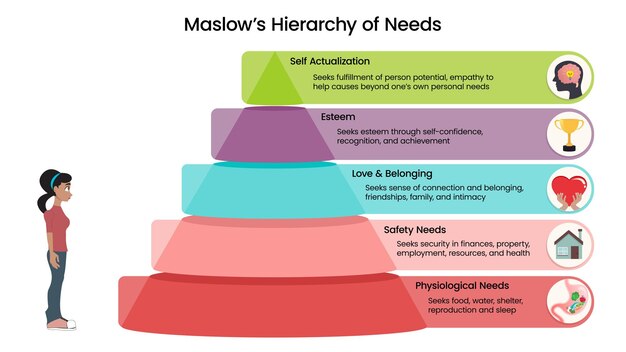Defining Motivation: Key Theories Unveiling Human Behavior
Motivation serves as the driving force behind human actions and behaviors, guiding individuals toward specific goals. Several psychological theories have been developed to elucidate the factors that influence and sustain motivation. Below, we explore some prominent theories and their core principles.

Page Contents
Understanding Motivation: Key Theories Unveiling Human Behavior
1. Maslow’s Hierarchy of Needs:
Theory Overview: Abraham Maslow’s Hierarchy of Needs posits that human needs are arranged in a hierarchical order, from basic physiological needs to higher-level needs like self-actualization. As lower-level needs are met, individuals strive for the fulfillment of higher-order needs.
2. Herzberg’s Two-Factor Theory:
Theory Overview: Frederick Herzberg introduced the Two-Factor Theory, which categorizes workplace factors into hygiene factors and motivators. Hygiene factors prevent dissatisfaction, while motivators stimulate satisfaction and intrinsic motivation.
3. Expectancy Theory:
Theory Overview: Victor Vroom’s Expectancy Theory suggests that motivation is influenced by individuals’ expectations about their ability to perform a task and the anticipated outcome. It emphasizes expectancy, instrumentality, and valence as key determinants of motivation.
4. Goal-Setting Theory:
Theory Overview: Edwin Locke’s Goal-Setting Theory emphasizes the importance of setting specific and challenging goals. Clear goals enhance motivation, performance, and direction, driving individuals to achieve objectives.
5. Self-Determination Theory:
Theory Overview: Self-Determination Theory (SDT) by Deci and Ryan focuses on intrinsic motivation driven by three fundamental psychological needs: autonomy, competence, and relatedness. Fulfilling these needs fosters intrinsic motivation.
6. Cognitive Evaluation Theory:
Theory Overview: Part of SDT, the Cognitive Evaluation Theory examines how external factors like feedback and rewards affect intrinsic and extrinsic motivation based on the satisfaction of psychological needs.
Table Outline
| Theory | Founder | Core Principles |
|---|---|---|
| Maslow’s Hierarchy of Needs | Abraham Maslow | Hierarchical arrangement of human needs affecting motivation. |
| Herzberg’s Two-Factor Theory | Frederick Herzberg | Differentiates hygiene factors and motivators in the workplace. |
| Expectancy Theory | Victor Vroom | Focuses on expectancy, instrumentality, and valence in determining motivation. |
| Goal-Setting Theory | Edwin Locke | Emphasizes the impact of specific and challenging goals on motivation. |
| Self-Determination Theory | Deci and Ryan | Highlights intrinsic motivation driven by autonomy, competence, and relatedness. |
| Cognitive Evaluation Theory | Part of SDT | Examines how external factors impact intrinsic and extrinsic motivation based on psychological needs. |
Conclusion
These theories provide valuable insights into the diverse factors influencing human motivation. They emphasize the interplay of internal and external factors, the role of goals, the importance of needs satisfaction, and the complex nature of human behavior. Defining these theories offers a framework for comprehending and managing motivation in various contexts, including the workplace, education, and personal development.







